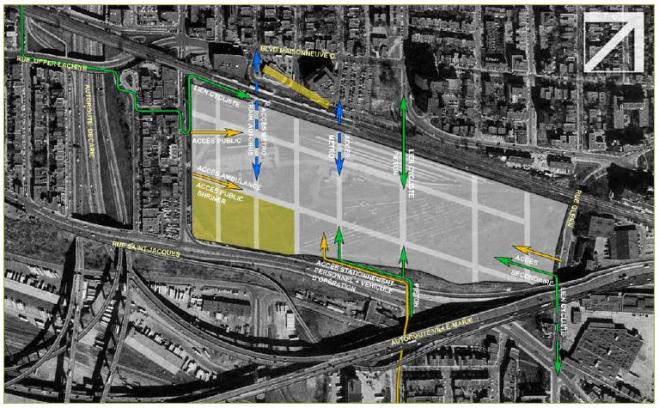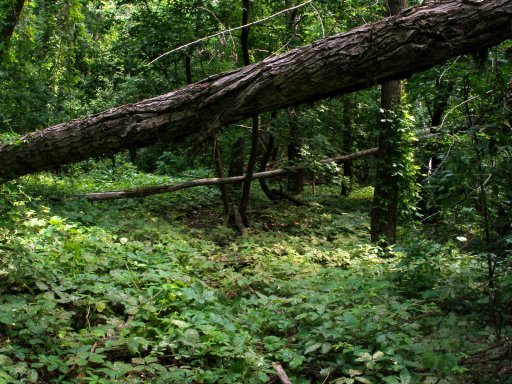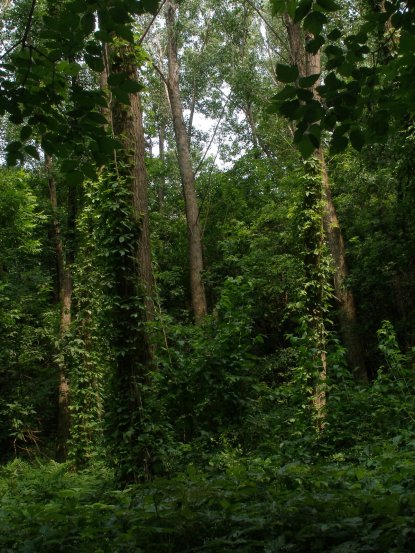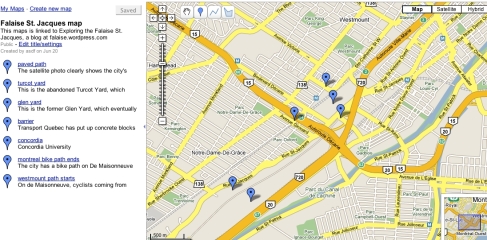I got a couple of wonderful emails from reader Dan J. Sullivan about what the area (particularly what is now de Maisonneuve Blvd. and the St. Raymond neighbourhood) was like in the 1940s and 1950s.
His first email:
“Great article. As yet I have not read the blog. As kid growing up in N.D.G. our thrill was to ride our bikes along (what is now de Maisonneuve Blvd), often a daring issue. Their then (1945-60) were some internecine wars between teenagers of different ethnic backgrounds.”
I asked for more details about the trail and the wars and he obliged:
“Herewith my best recollections:
TRAIL
This is the recollection of a retired legal professional 70+ grandfather and victim of marbles no longer as round or as sound as yesteryear. As a kid who grew up in N.D.G. on Marcil Ave. north of Monkland along with chaps the likes of which Bill Shatner, Gerald Clarke (Montreal Star), Martin Goodman (The Toronto Star), Brahm Gelfand (QC) we never thought of going below the tracks… Mon Dieu.
However, when the devil made us do it we would go (today we call it going slumming) down across Sherbrooke St and over Western Ave. (now de Maisonneuve Blvd). There was a narrow trail against the fence. The said trail would be a challenge in that it was truly very narrow and at times steep so that one could easily lose one’s balance fall close to tracks. In the event that one maneuvered through this stretch the trail meandered away from the railway into other thrills i.e. downhill into a hobo-jungle. Curiosity never led us past Montreal West.
WARS
The northern part of the tracks (a social class division used at the time) consisted, in current terminology, of “francos” and “anglos,” whilst on the southern border a lived a large contingent of first and second generation Italians.
Fixed times for a rumble would be negotiated and the two camps, armed with bats, several letter soles glued or nailed together were used for a show of strength.
These “meetings” were usually conducted in the aforementioned area (hobo-jungle) at very nocturnal hours. Since I never was invited to participate nor that I sought that experience I am unable to report what were the short or long term results of these moments in a boy’s life. Perhaps it was training for professional business careers not requiring an MBA from Harvard.
Regards,
Dan”








